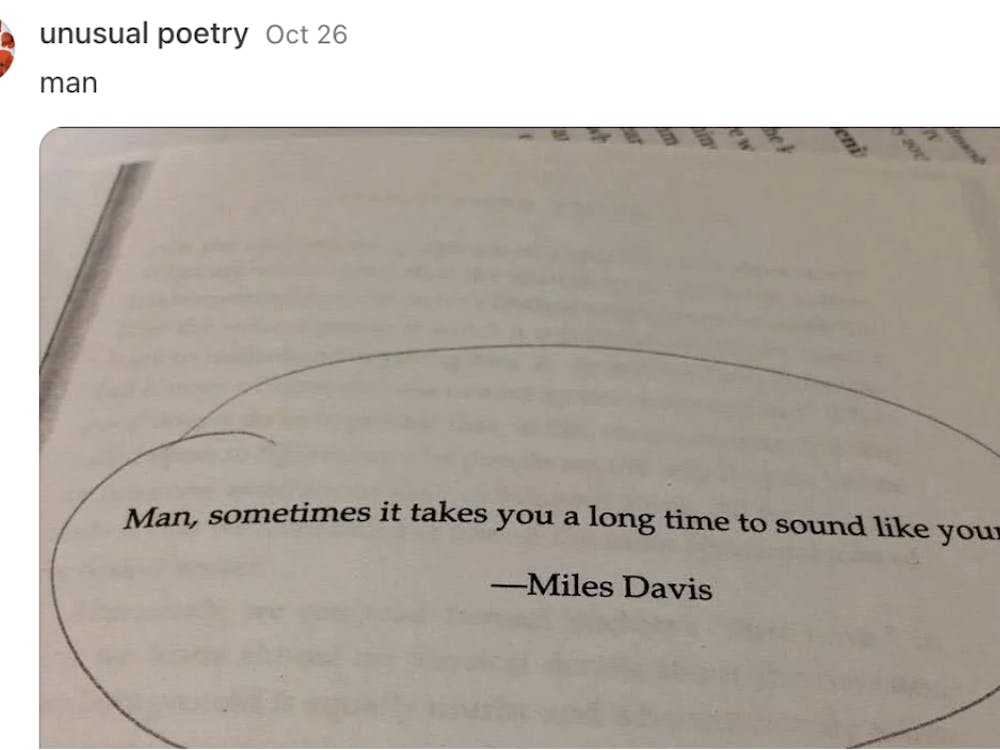This past weekend was an internationally recognized holiday celebrating love in the name of Saint Valentine, or, as others observe Feb. 14: Single’s Awareness Day. It was also the premiere weekend of the eagerly anticipated film adaptation of the book Fifty Shades of Grey.
Fifty Shades of Grey is E.L. James’s first novel. She is a former TV executive, a wife, the mother of two children and now the author of a successful romance trilogy, with over 100 million copies of the first installment sold. In summary, this novel-turned-movie follows the affair between a naïve, inexperienced girl and a young, wealthy bachelor. Set in the dreary city of Seattle, this series traces the story of recent college graduate Ana Steele and the illustrious Christian Grey. Known for its explicit sex scenes, many have written off James’s work as a trashy romance novel that unfortunately gained momentum among bored middle-aged housewives looking to spice up their imaginative sex life.
However, since the movie’s release, there has been discussion on blogs and social media pointing out the deeper flaws of Fifty Shades of Grey. The plot dances an extremely fine line between dating the bad boy, who is secretly a softie on the inside, and being in a domestically abusive and violent relationship. The biggest question surfacing is, “Did she cross that line?”
Fifty Shades of Grey is not only seen as taboo for its pornographic scenes, as found in most romance novels, but it pushes the envelope with the BDSM tendency of Mr. Grey that allures Ana. Christian Grey is described as an intense yet quiet man who eventually tempts Ana just enough to give her a taste of his sexual adventures. Together they struggle to find a place in which they are both comfortable. While I am certainly no expert on the BDSM lifestyle, the glamorization and fictionalization of the subculture is a misrepresentation of its reality.
While I do not condone nor refute this trilogy, I do think that when reading the novel or viewing the movie one must keep in mind the purpose of it all. The story is not meant to be biographical, nor completely factual. It is a work of fiction meant to entertain its audience. E.L. James knew her audience well judging by the series’ success and rapid popularity. She didn’t hook them on languid prose or carefully developed characters, but rather she gave them the thrill of a sexual fantasy lived vicariously through Ana Steele and Christian Grey.
The relationship between the two protagonists is not meant to serve as a model romance that should be sought after. Instead, it should be thought of as a challenge by James to the female psychological curiosity in a situation that is not real but rather a fictitious fantasy that forces the reader to question their sexual comfort zone. If thought about too much, this story does call into question the abusive relationship between the two — not only could the actions of Mr. Grey be interpreted as disturbing and dangerous, but Ana’s could also be seen as passive and ignorant. The conversation of domestic abuse should be discussed as a serious problem in society, and there is no excuse, not even love, for such abuse. However, this novel is not a promotion of domestic abuse, and instead is a piece of writing meant for a mature audience with the intent to entertain.
I understand people’s disgust with the popularity of the series mainly because it has become widely known and integrated into our pop culture. It is not meant for young audiences, either in age or maturity.
While porn is seen as taboo to many, it has also become more socially accepted and acknowledged, even though people do not often feel comfortable making it a casual topic of discussion. I consider Fifty Shades of Grey to be of the same classification. People have pulled parallels from the book to reality, proposing that Mr. Grey’s appearance in Ana’s room uninvited with the intent to have sex without consent classifies as stalking and/or domestic violence, and ultimately, had this occurred in a real relationship, it would be sexual assault. But how would these same people feel about a porno featuring a man in a fake costume delivering a pizza to a lonely housewife? After all, they don’t have a long romantic conversation that leads to passionate lovemaking, but rather, upon seeing each other, they immediately have sex without exchanging a single word. This would be absolutely absurd if it occurred in real life, and yet that isn’t the expectation upon watching it, is it?
I ask that people keep an open mind about Fifty Shades of Grey and understand what they are paying to go see. People who enjoyed this novel shouldn’t be labeled as people who condone abusive relationships. Just as people who enjoy watching the hit TV drama Dexter aren’t labeled as people who condone murder instead of a fair trial.
The fame of the series brings into question the way in which our society views sex. Let it be a way to openly discuss the reality of how situations in real life can lead to domestic abuse, or even let it be a segue into teaching young adults about what it means to have a healthy relationship with someone. Use its popularity to perpetuate discussion and answer uncomfortable questions.




